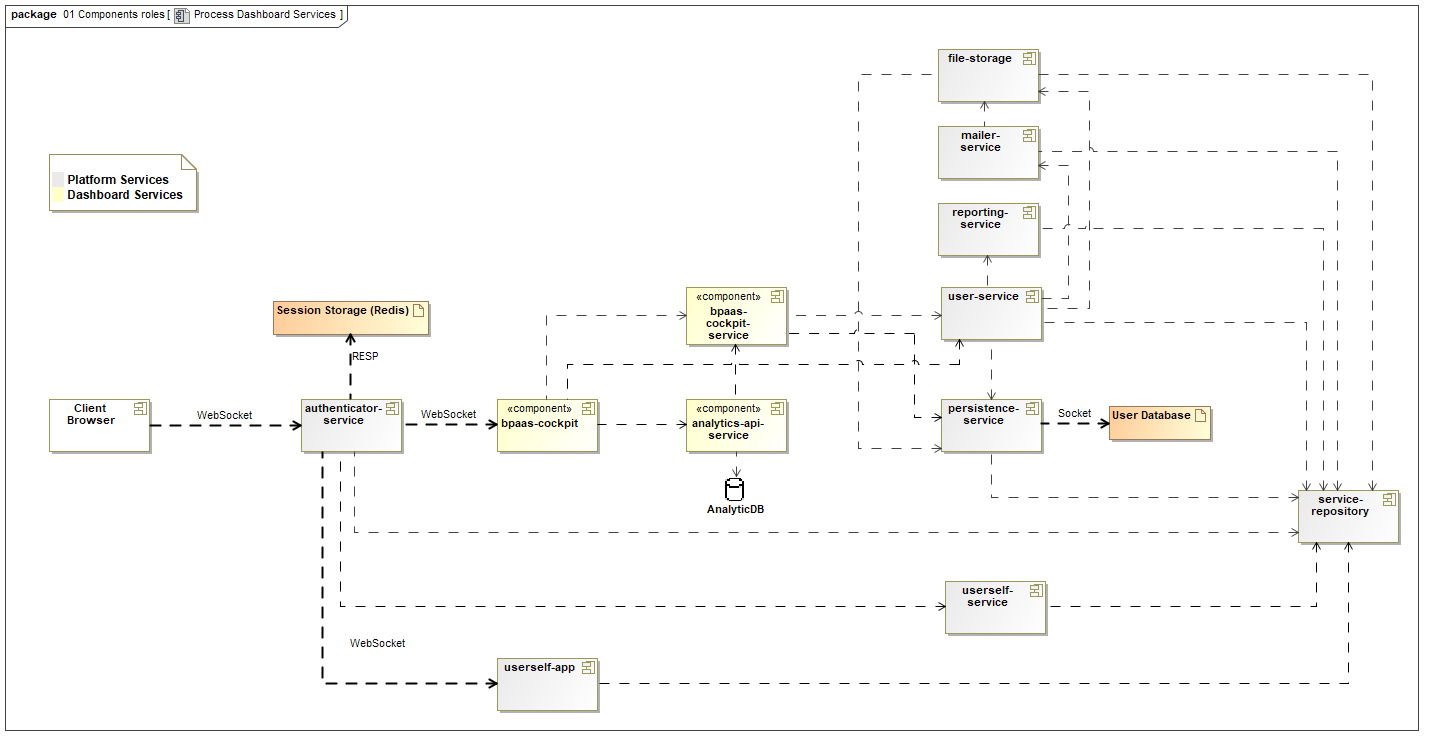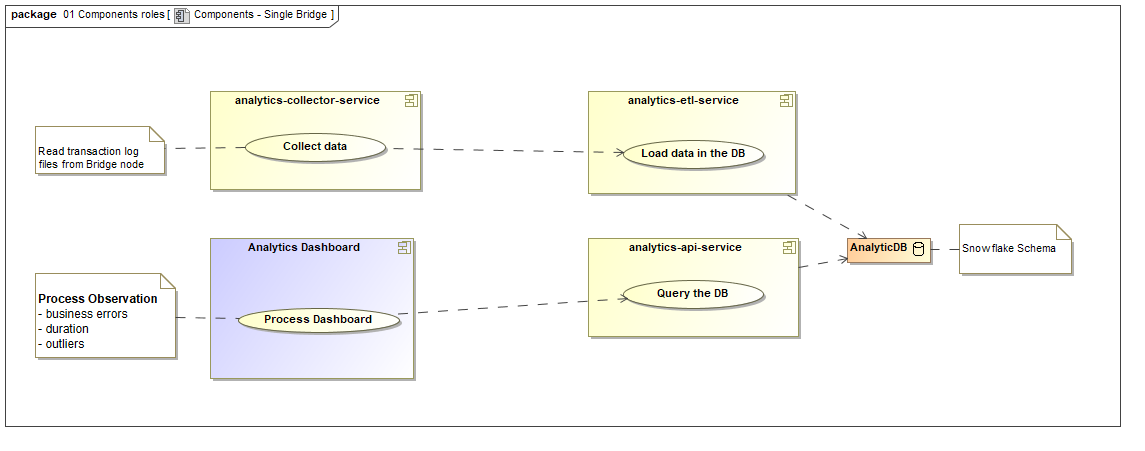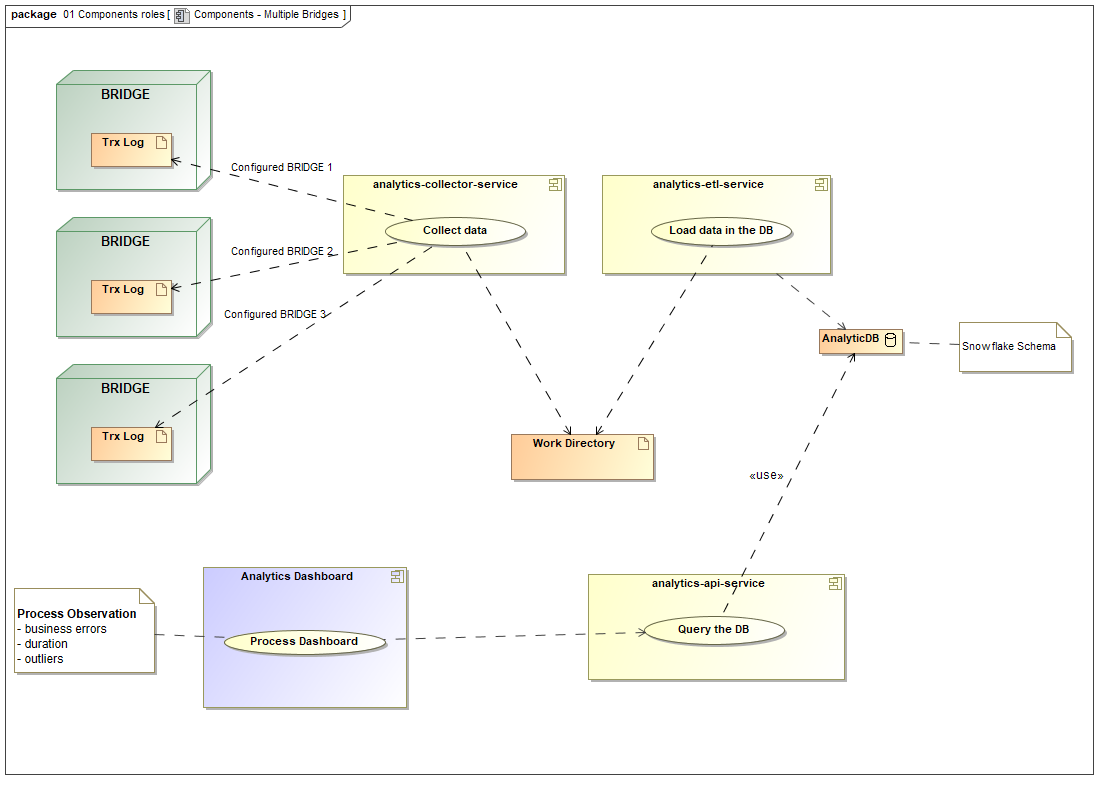Page History
Versions Compared
Key
- This line was added.
- This line was removed.
- Formatting was changed.
| Note |
|---|
Please note that this Installation Guide is only applicable for customers using Scheer PAS BRIDGE. |
Overview on the Components of Process Mining
Have a look at the figures below to get a technical overview on the components of Scheer PAS Process Mining.
Image Removed
 Image Added
Image Added
Scenario 1: Single BRIDGE Installation
If you have set up one single BRIDGE installation on a machine, the full stack of Process Mining services needs to be deployed and executed on that machine.
Figure: Technical Overview on the Components of Process Mining (Scenario 1)
Image Removed
 Image Added
Image Added
Scenario 2: Distributed BRIDGE Installations
If you have set up BRIDGE installations on multiple nodes to distribute the services, you might want to collect and analyze data from multiple nodes. In that case it is not necessary to deploy the full stack of Process Mining services to each BRIDGE installation. The TrxLogsCollector is able to use an (S)FTP location to forward the collected log files to TrxLogsETLYou need to setup file shares to let the analytics-collector-service access the BRIDGE data directories of each node. Therefore, only one node is needed to run the full stack of Process Mining services. The stack of Process Mining services on all other nodes is reduced to the TrxLogsCollector.
Figure: Technical Overview on the Components of Process Mining (Scenario 2)
Image RemovedYou will have to install the ETL tools and a related database, the Analytic API and the Process Mining UI.
 Image Added
Image Added
Overview on the Installation Process
To install Scheer PAS Process Mining, you need to got through the following steps:
- Setup the database used by the Process Mining services.
The Process Mining services rely on analytical data that has been collected and stored in a database.
For a description on how to setup the database for the use of the Process Mining services, refer to Setting up the Database for Process Mining. - Deploy the services that will collect, extract and extract query the analytical data.
The analytical data Process Mining relies on have to be collected and extracted to the analytical database.
For a description on how to deploy the data services, refer to Deploying the Services.Deploy the service that gives access to the data in the analytical database.
The Node.js service provides The services provide an interface to inspect the collected Process Mining data.
For a description on how to deploy the servicedata services, refer to Deploying the Services. - Connect the data collection services to the database.
To connect the deployed services from steps step 2 and 3 to the database configured in step 1, you need to adjust some BRIDGE Node.js settings to match your configuration as described in Configuring the Process Mining Services. - Start the services.
It does not matter in what order you start the Start analytics-etl-service first. Once it initialized the Analytic Database, start the other services. - Use the Scheer PAS Administration to create Process Mining users.
In order to use Process Mining, assign the necessary profiles to the system users. For further information about the needed profiles and how to assign them, consult the ADMIN. See page Configuring the Platform Services for further information about the composition of the Scheer PAS Administration URL.
Updating the Dashboards
Generally, you can just upload the latest service repository to update the Process Mining services. However, with updating TrxLogsETL updating analytics-etl-service there are some restrictions and you have to follow the procedure described in Updating the Services.